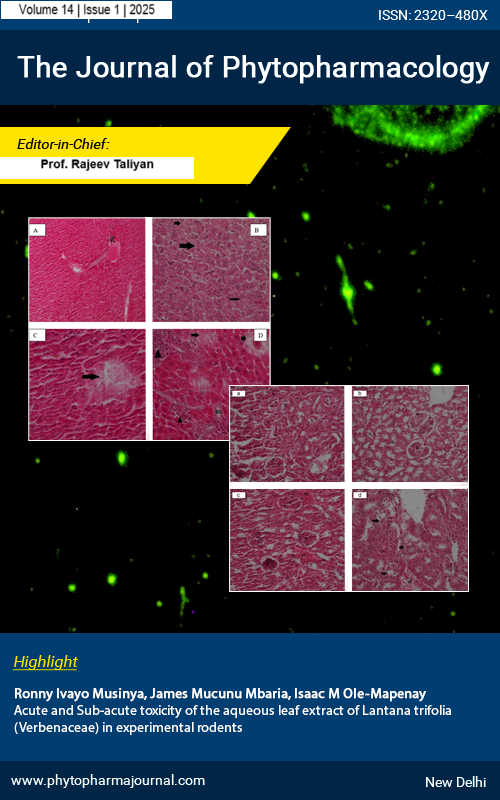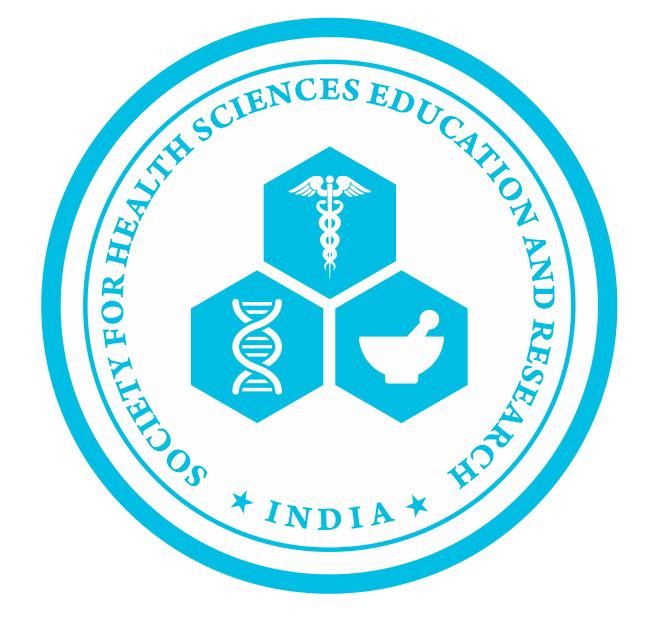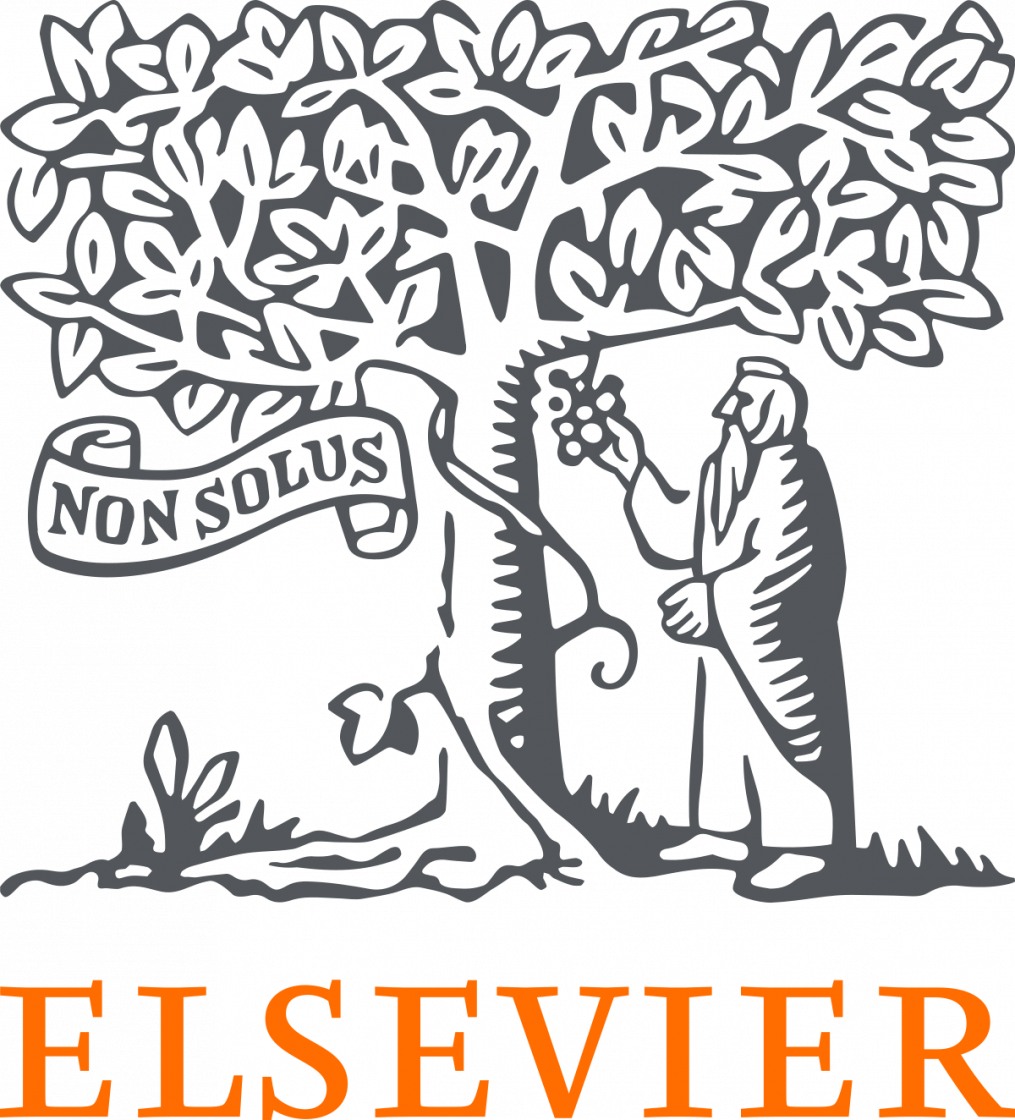
Editor-in-Chief
Prof. Rajeev Taliyan
Department of Pharmacy, Birla Institute of Technology & Science (BITS), Pilani, Rajasthan, India
Instruction to Author
Authors can submit their original ideas and findings, matches with the aim and objectives of the journal in the form of original or review articles, case reports and short communication. The manuscript should be written in the English language using font Times New Roman, size 10 and single line space in the compatible MS-Word format (.doc/.docx) in one column with margins of one inch (2.5 cm) at the top, bottom and the sides. The length of the manuscript should not be more than 20 pages.
Paper submission steps
1. Submit a Cover letter in MS word format Download sample file
2. Submit an Authorship responsibility form Download sample file
3. Submit the full manuscript in MS word format (Template), which should have all ‘Figures with heading’ and all the ‘Tables with heading and/or legends Download sample file
4. Corresponding author can submit their article by clicking on the link Online Submission or can be submit through email: editor@phytopharmajournal.com, phytopharmajournal@gmail.com.
5. Fill the required details and upload all the files.
6. For any inconvenience in manuscript submission mail to handling editor (phytopharmajournal@gmail.com).
Copyrights
Journal follow the Creative Commons Attribution (CC-BY) license to published articles. The licence permits unrestricted use, distribution, and reproduction in any medium, provided the original author and source are credited. (https://creativecommons.org/licenses/by/4.0/).
Manuscript Preparation Guidelines
Preparation of Cover Letter
Each submitted article must be accompanied by a Covering letter stating:
The section under which the manuscript is submitted (original research, review, case reports, short communication, letter to the editor, etc). The undertaking that the article is neither under consideration in any other journal nor has been published/accepted for publication in any other journal. The authors should state that the article represents original work and that they take full responsibility for the information provided.
Provide the contact details and affiliation of two potential reviewers (Optional).
Categories of manuscripts
|
S. No |
Manuscripts |
Word limit of abstract |
Word limit of manuscript* |
Comments |
|
1 |
Editorial |
NA |
Not more than 1000 |
Usually Invited |
|
2 |
Original Article |
300–500 |
Not more than 5000 |
Structured abstract |
|
3 |
Review |
300–500 |
Not more than 7000 |
Abstract should be unstructured but for systematic review it should be structured |
| 4 |
Case Report |
300–500 |
Not more than 2500 |
Unstructured Abstract |
|
5 |
Education Forum |
300–500 |
Not more than 4000 |
Unstructured Abstract |
|
6 |
Short Communication |
300–500 |
Not more than 3000 |
Unstructured abstract |
|
7 |
Research Letter |
100–250 |
Not more than 1500 |
Unstructured abstract |
|
8 |
Letter to the Editor |
NA |
Not more than 1000 |
NA |
|
9 |
Correspondence |
NA |
Not more than 800 |
NA |
* The word limit includes references. If limit is exceeded, the data should be submitted as a supplementary file.
Abstract
For research articles, the abstract must be structured under the following headings: Background, Objective, Materials and Methods, Results, and Conclusion. For review articles, case reports, education forum articles, and short communications, a non-structured abstract is required. The abstract should not exceed 500 words and must clearly present the essence of the entire work. For research letters, the abstract should not exceed 250 words. Abbreviations, taxonomic authorities, and references should not be included in the abstract.
Keywords
3-6 keywords are to be provided by the authors. These keywords should be typed at the end of the abstract on the same page.
Introduction
The introduction should not be an extensive literature review although it should provide sufficient background information for the reader to understand and evaluate the results of the present study.
Materials and Methods
This section should provide sufficient technical detail to allow the experiments to be accurately reproduced. Procedures that have been published previously should be referenced rather than described in full. Where applicable, this section must include a statement of ethical approval for studies involving animals or human subjects, specifying the approving institution and protocol number. Additionally, a clear description of the statistical methods used for data analysis is mandatory wherever appropriate.
Results
Results should be described as concisely as possible in one of the following ways: text, table(s), or figure(s). The table(s), and/or figure(s) should not be more than 10. The reproducibility and statistical significance of measurements, material or biological data, must be included where relevant.
Discussion
The discussion should provide an interpretation of the results and their significance with regard to previously published work. There should not be any significant repetition of the experimental procedures or reiteration of the introduction.
Conclusion
A short, paragraph summarizing the most important finding(s) of the research is Required.
Acknowledgments
The source of any financial support, gifts, technical assistance and advice received for the work being published must be indicated in the Acknowledgments section.
References
In the text, the references should be typed in Vancouver style without date and month of the publications.
Journal article, up to 6 personal author(s):
1. Dar RA, Shahnawaz M, Ahanger MA, Majid I. Exploring the diverse bioactive compounds from medicinal plants: a review. J Phytopharm. 2023;12:189-95.
Electronic journal article:
2. Poling J, Kelly L, Chan C, Fisman D, Ulanova M. Hospital admission for community-acquired pneumonia in a First Nations population. Can J Rural Med. 2014;19(4):135-141. Available from: http://www.srpc.ca/14fal.html by selecting the PDF link in the table of contents.
Electronic journal article, 7 or more personal authors, optional DOI information:
3. Aho M, Irshad B, Ackerman SJ, Lewis M, Leddy R, Pope T, et al. Correlation of sonographic features of invasive ductal mammary carcinoma with age, tumor grade, and hormone-receptor status. J Clin Ultrasound. 2013;41(1):10-7. Available from: http://onlinelibrary.wiley.com/doi/10.1002/jcu.21990/full DOI: 10.1002/jcu.21990
Book, personal author(s):
4. Buckingham L. Molecular diagnostics: fundamentals, methods and clinical applications. 2nd ed. Philadelphia: F.A. Davis; c2012.
Book or pamphlet, organization as both author and publisher:
5. College of Medical Radiation Technologists of Ontario. Standards of practice. Toronto: The College; 2011.
Book, editor(s):
6. Kumar V, Abbas AK, Aster JC, editors. Robbins basic pathology. 16th ed. Philadelphia: Elsevier Saunders; c2013.
Book, editor(s), specific chapter with individual author(s):
7. Altobelli N. Airway management. In: Kacmarek R, Stoller JK, Heuer AJ, editors. Egan’s fundamentals of respiratory care. 10th ed. St. Louis: Saunders Mosby; c2013. p. 732-86.
Electronic book, personal author(s), requiring password:
8. Martin A, Harbison S, Beach K, Cole P. An introduction to radiation protection [Internet]. 6th ed. London: Hodder Arnold; 2012 [cited 2015 May 28]. Available from: http://lrc.michener.ca:2048/login?url=http://search.ebscohost.com/login.aspx?direct=true&db=nlebk&AN=466903&site=ehost-live&ebv=EB&ppid=pp_iii with authorized username and password.
Electronic book, organization as author, freely available:
9. OpenStax College. Anatomy & physiology [Internet]. Version 7.28. Houston: The College; 2013 Apr 25 [Updated 2015 May 27; cited 2015 May 28]. Available from: http://cnx.org/content/col11496/latest/.
Dictionary entry:
10. Stedman’s medical dictionary for the health professions and nursing. 7th ed. Philadelphia: Wolters Kluwer/Lippincott Williams & Wilkins; c2012. Hematoma; p. 756.
Entry in a print reference work:
11. Canadian Pharmacists Association. CPS 2013: compendium of pharmaceuticals and specialties. 48th ed. Ottawa: The Association; c2013. Atropine: Systemic; p. 297-9.
Entry in an online reference work:
12. Canadian Pharmacists Association. eCPS. [Internet]. Ottawa: The Association; 2015. Methimazole; [revised 2012 Mar; cited 2015 May 28]; [about 6 screens]. Available from: http://lrc.michener.ca:2048/login/ecps with authorized username and password.
Wiki entry:
13. Wikipedia: the free encyclopedia [Internet]. St. Petersburg (FL): Wikimedia Foundation, Inc. 2001 – Ebola virus epidemic in West Africa; [modified 2015 May 28; cited 2015 May 28]; [about 34 screens]. Available from: http://en.wikipedia.org/wiki/Ebola_virus_epidemic_in_West_Africa
Newspaper article:
14. Carville O. Health ‘snooping’ cases on the rise. Toronto Star. 2015 May 27:Sect. GT:1 (col. 3).
Electronic newspaper article:
15. Wisniewski M. Five babies at Chicago daycare diagnosed with measles. Globe and Mail [Internet]. 2015 Feb 5 [cited 2015 Feb 6];Life:[about 2 screens]. Available from: http://www.theglobeandmail.com/life/health-and-fitness/health/five-babies-at-chicago-daycare-diagnosed-with-measles-report/article22805944/.
Legal material (note: this is not addressed in Vancouver Style):
16. Accessibility for Ontarians with Disabilities Act, S.O. 2005, c.11 [Internet]. 2009 Dec 15 [cited 2015 May 29]. Available from: http://www.e-laws.gov.on.ca/html/statutes/english/elaws_statutes_05a11_e.htm
Report available on a web page:
17. Canadian Institute for Health Information. Depression among seniors in residential care [Analysis in brief on the Internet]. Ottawa: The Institute; 2010 [cited 2015 May 29]. 18 p. Available from: https://secure.cihi.ca/free_products/ccrs_depression_among_seniors_e.pdf
Page on a website:
18. Alzheimer Society of Canada [Internet]. Toronto: The Society; c2015. Benefits of staying active; 2013 Jan 28 [cited 2015 May 29];[about 1 screen]. Available from: http://www.alzheimer.ca/en/kfla/Living-with-dementia/Day-to-day-living/Staying-active/Benefits-of-staying-active
Streaming video:
19. Allen S, Waerlop I. The Gait Guys talk about great toe dorsiflexion [Internet]. [place unknown]: The Gait Guys; 2014 May 11 [cited 2015 May 29]. Video: 3 min. Available from: https://www.youtube.com/watch?v=E8O8TLtunUQ
Electronic image:
20. Bickle I. Swallowed foreign body [radiograph]. 2014 Jul 14 [cited 2015 May 29]. In: Radiopaedia.org [Internet]. [place unknown]: Radiopaedia.org; c2005-2015. [about 1 screen]. Available from: http://radiopaedia.org/cases/swallowed-foreign-body-1
Blog post (no given name, so screen name used as an author):
21. Munkee. Nuclear Munkee. [blog on the Internet]. [place unknown]:[Munkee]; [date unknown] –. In-111 pentetreotide imaging; 2013 Mar 19 [cited 2015 May 29]; [about 3 screens]. Available from: http://nuclearmunkee.blogspot.ca/2013/03/in-111-pentetreotide-imaging.html
Poster presentation/session presented at a meeting or conference:
22. Chasman J, Kaplan RF. The effects of occupation on preserved cognitive functioning in dementia. Poster session presented at: Excellence in clinical practice. 4th Annual Conference of the American Academy of Clinical Neuropsychology; 2006 Jun 15-17; Philadelphia, PA..
Figure(s) and Table(s)
All the figures should be in JPG/JPEG format in a word file. The figures should be with the resolution of 300 dpi. Figures should be numbered as they are cited in the main text. If the figure is a plate, each figure should be subdivided by using upper case letters of bold “Times New Roman” font size as required but similar in all. If a figure comprises more than one glossy photograph, these should be marked A, B, C...etc. Legends of all figures should be provided on a separate page.
Figure format:
Figure 1: ---(8 Font size, Times New Roman, Normal)
Tables
The table should be made as simple as possible. Only a few horizontal lines should be used without vertical lines in the table. All tables should be placed after references in the manuscript. Each table should be consecutively numbered in Arabic numerals with a self-descriptive heading and/or legend. Any abbreviation or symbol used in the table should be described in the legend. The same data should not be represented in tables and in graphs.
Table Format – It should be designed using table tools of MS Word and exactly same as below
Table 1: --- (8 Font size, Times New Roman, Normal)
Units and Symbols: The use of the International System of Units (SI) is recommended.
Formula and equations
Structural and chemical formula, process flow diagrams and complicated mathematical Expressions should be very clearly presented. All subscripts, Greek letters and unusual Characters must be identified. Structural and chemical formulae as well as process flow Diagrams should be prepared in the same way as graphs.
Proof Corrections
Corresponding Author will receive PDF version of their manuscript for proof reading after acceptance of the article. Proofs should be checked for typographical errors and returned within 48 hours. Major changes are not acceptable at the proof stage. The corresponding author will be solely responsible for ensuring that revised version has consent of all the authors and it must reach editorial office within stipulated time.
Jurisdiction
All the Services, are governed by and constructed in accordance with the laws of India, without reference to conflict of laws principles and you irrevocably and unconditionally submit to the non-exclusive jurisdiction of the courts of Delhi, Delhi, India. For any dispute or related violence, it will be discussed and considered only in front of ‘Judiciary of Delhi’ at Delhi, India.


